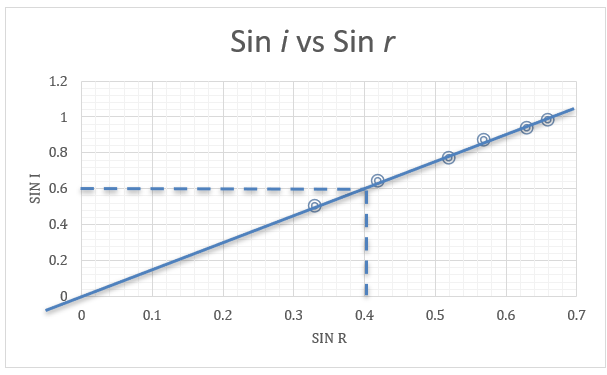Question
- Leaving Certificate Physics (Higher) 2020: Section A Q2
- Back to the question >
Answer
In an experiment to determine the refractive index of glass, light was passed through a glass block and the angles of incidence i and refraction r were measured for different values of i. The following data were recorded.

(i) Explain how the refracted ray and the angle of refraction were determined. (A labelled diagram may help your answer.)

Method:
- Place a glass block, as shown, and mark its outline.
- Shine a ray of light from a light-box, as shown.
- Mark the position of the light ray as it enters and leaves the block and then remove the block.
- Draw in the refracted ray, as shown above.
- Draw in the normal and measure i and r, as shown, with a protractor.
(ii) Why would using a smaller angle of incidence have led to a less accurate measurement of the angle of refraction?
A smaller angle of incidence would create a smaller angle of refraction. This would increase the percentage error in the measurement of the angle of refraction.
(iii) Use the data to draw a suitable graph to verify Snell’s law.


(iv) Explain how your graph verifies Snell’s law.
The graph yields a straight line through the origin, confirming that sin i is proportional to sin r, in keeping with Snell’s Law.
(v) Use your graph to calculate the refractive index of the glass.
The slope of the line of best fit will be equal to the refractive index.

Therefore, the refractive index is 1.5.
